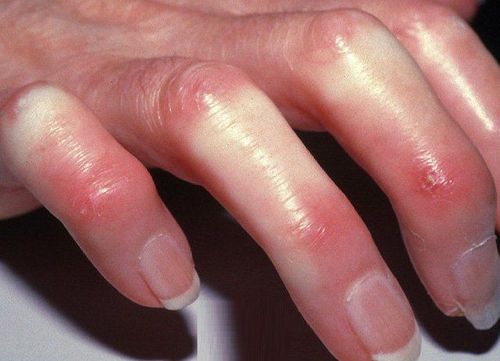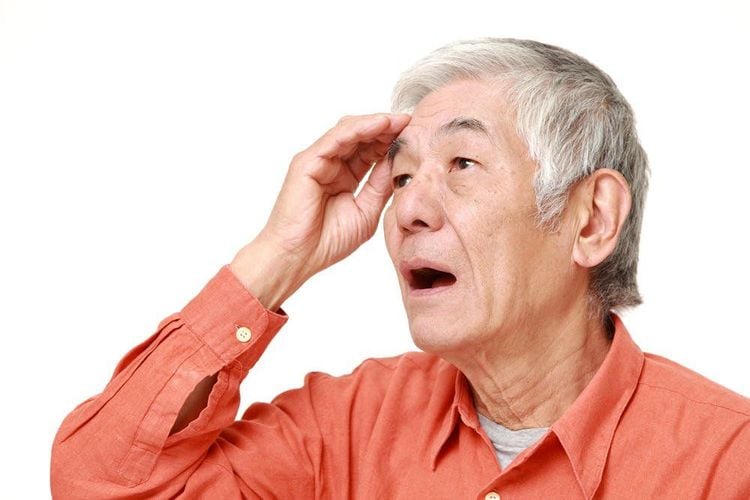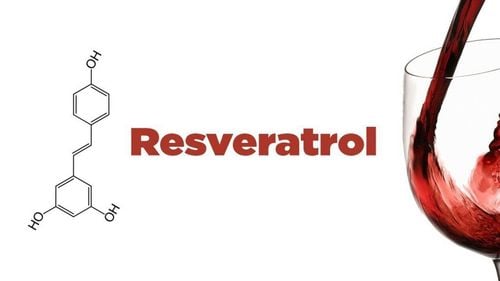This is an automatically translated article.
Article by Master, Doctor Vu Duy Dung - Department of General Internal Medicine - Vinmec Times City International Hospital
Premotor, motor and nonmotor symptoms of Parkinson's disease are described in the article below.
1. Motor symptoms
The four main motor symptoms of Parkinson's disease are tremor, muscle stiffness, bradykinesia, and postural instability, as defined by the acronym TRAP (tremor, rigidity, akinesia (or bradykinesia), and postural instability). (Table 1-1). Secondary motor symptoms include decreased swinging of the arms, decreased blink frequency, masked facial expressions (hypomimia), decreased voice volume (hypophonia), and difficulty turning in bed.
Run refers to pulsating rhythmic fluctuations around a fixed point during rest or a non-postural position. Tremor is often the first motor symptom of Parkinson's disease and occurs in about 90% of patients at some point in their lives. While the tremor of Parkinson's disease is typically a resting tremor, 50% of patients may also present with a tremor that may reappear with extension of the arms. The tremor starts out asymmetrically and is characterized by a pronation and back, or ball roll, that eventually affects the opposite side of the body. Tremor may be poorly responsive to pharmacological treatments, including levodopa.
Stiffness refers to stiffness or resistance of a limb when it is passively flexed, activating both agonist and antagonist muscles, and may also be called a cog wheel. Stagnation means slow movement (no movement means no movement) and can occur both during initiation and maintenance of movement.

Parkinson có thể gây ra các triệu chứng cứng cơ các chi
Postural instability, or balance dysfunction, appears later in the course of the disease, about a decade after the initial diagnosis. Postural instability is correlated with disease severity and is demonstrated by tensile testing. It is a symptom of levodopa resistance, as opposed to bradykinesia, muscle stiffness, and tremor. Postural instability is a major cause of falls, causing hip fractures, loss of independence, and home nursing for patients.
Table 1-1: Pre-motor, motor and non-motor symptoms of Parkinson's disease
| Các triệu chứng trước vận động |
Táo bón Mất khứu giác Rối loạn hành vi trong giấc ngủ động mắt nhanh (REM) Trầm cảm |
| Các triệu chứng không vận động: Tâm thần kinh |
Trầm cảm Lo âu (rối loạn cảm xúc) Thờ ơ, lãnh cảm Rối loạn kiểm soát ham muốn Loạn thần Mất khoái cảm Ảo giác Mất ý chí Rối loạn giảm chú ý Các cơn hoảng sợ |
| Các triệu chứng không vận động: Nhận thức |
Rối loạn chức năng điều hành Mất trí nhớ Sa sút trí tuệ |
| Các triệu chứng không vận động: Thần kinh tự động |
Hạ huyết áp tư thế Táo bón Mất kiềm chế đại tiện Buồn nôn Nôn Chảy nước mũi, chảy nước dãi Mất kiềm chế tiểu tiện và tiểu gấp Rối loạn tình dục Thay đổi phản xạ tim Rối loạn chức năng khứu giác Rối loạn chức năng dạ dày ruột Tăng tiết mồ hôi Khó nuốt |
| Các triệu chứng không vận động: Rối loạn giấc ngủ |
Mất ngủ Buồn ngủ Buồn ngủ ngày quá mức Hội chứng chân không yên Các cơn ngủ Cử động chi có chu kỳ trong giấc ngủ Rối loạn hành vi trong giấc ngủ REM Giấc mơ sống động |
| Các triệu chứng không vận động: Bất thường cảm giác |
Mất khứu giác Đau Mất vị giác Tê Dị cảm |
| Các triệu chứng vận động chính |
Run Cứng cơ Chậm động (hoặc không động) Mất ổn định tư thế Rối loạn dáng đi |
Other terms associated with Parkinson's disease symptoms include dyskinesia, also called levodopa dyskinesia, which refers to abnormal, involuntary, chorea-like movements that can be in the limbs, head, and trunk me. Levodopa-induced dyskinesia may also present with swinging, myoclonus, dystonia, or a combination of these movements. Levodopa-induced dyskinesia may be further classified as peak-dose dyskinesia, time-off or wearing-off dyskinesia, or biphasic dyskinesia. Biphasic dyskinesia begins soon after taking levodopa, followed by improvement in Parkinson's symptoms and dyskinesia and then a return of dyskinesia as dopamine levels decrease.
Dystrophy refers to involuntary, prolonged muscle contractions with abnormal postures, often in the extremities. Dystonicity often occurs with times of low dopamine levels, often during the early morning hours. Patients may twist their toes or invert the foot due to instep or plantar flexion, which can lead to leg cramps or pain. Dystonicity can also occur at peak dose, biphasic, or the “off” state.

Bệnh nhân có thể bị loạn trương lực vào sáng sớm
Motor oscillation refers to an “off” time, when there is a poor response to levodopa, alternating with an “on” period, i.e. a time of improvement in function. Motor oscillations occur with advanced disease, possibly because of fluctuating stimulation from levodopa on postsynaptic receptors. Off periods are predictable, during which symptoms emerge before the next dose, or can be unpredictable. Dose failure means that levodopa has a slow clinical effect. Freeze is described by Giladi and Nieuwboer as “an episodic inability (lasting a few seconds) followed by effective walking with no known cause other than Parkinson's syndrome or gait disorders. severity level. This is most common while turning and starting to walk but can also be seen when confined to confined spaces, when stressed, and when distracted.” Patients feel that their feet are glued to the ground, and this sensation is often essentially intermittent.
2. Non-motor symptoms
Over the past 20 years, there has been an increasing understanding of the importance of nonmotor symptoms (that is, symptoms other than those associated with movement, such as tremor, muscle stiffness, and bradykinesia) in the diagnosis and treatment of Parkinson's disease. It is estimated that nearly all patients with Parkinson's will have some accompanying nonmotor symptoms throughout the course of the disease. The impact of non-motor symptoms is often greater than that of motor symptoms; but unfortunately, nonmotor symptoms often go undetected. The nonmotor symptoms of Parkinson's disease are listed below and are in Table 1-1.
Neuropsychiatric non-motor symptoms include depression, apathy, apathy, desire control disorder, anxiety, psychosis, hallucinations, emotional disturbances, loss of will. Cognitive non-motor symptoms include executive dysfunction, memory loss, and dementia.

Parkinson có thể khiến người bệnh bị sa sút trí tuệ
Autonomic disorders including orthostatic hypotension, constipation, urinary incontinence, sexual dysfunction, altered cardiac reflexes, olfactory dysfunction, gastric dysfunction intestines, and sweating. Sleep disturbances including insomnia, somnolence, excessive daytime sleepiness, restless legs syndrome, episodes of sleep, cyclic limb movements during sleep, and ocular movement disturbances fast (REM). Sensory abnormalities include pain, numbness, fatigue, and decreased sense of smell. Non-motor symptoms may also fluctuate. During off periods, patients may experience worsening of emotions, anxiety, autonomic disturbances including sweating and irregular body temperature, pain/numbness, and other symptoms. Non-motor symptoms during the on episodes can include mania, agitation, paranoia, obsessions, and impulsivity.
3. Pre-exercise symptoms
Premotor symptoms are defined as symptoms that precede the motor symptoms of Parkinson's disease and include constipation, loss of sense of smell, REM sleep behavior disturbances, and depression (Table 1). -first ).
Source:
Theresa A. Zesiewicz. Parkinson's Disease. Continuum (Minneap Minn) 2019;25(4, Movement Disorders): 896-918.
SEE MORE DOCUMENTS ON PARKINSON'S DISEASE BY DOCTOR VO DUONG:
Outline of Parkinson's disease Clinical symptoms of Parkinson's Disease Diagnosis of Parkinson's disease Causes, imaging and grading scales of Parkinson's disease Parkinson's Disease Drugs Parkinson's Disease Treatment Outpatient Parkinson's Disease














